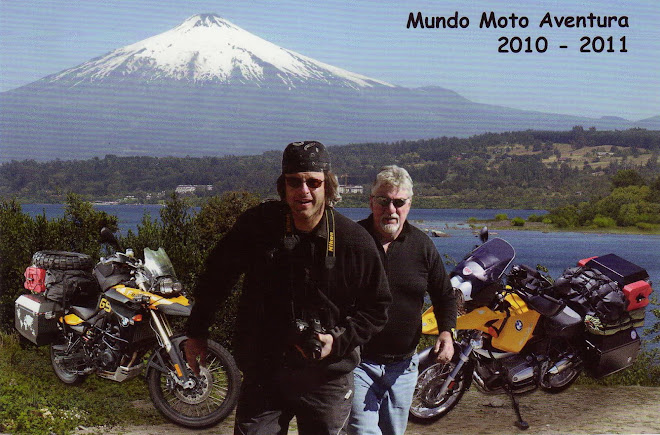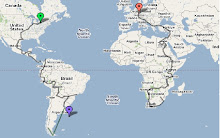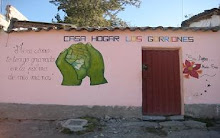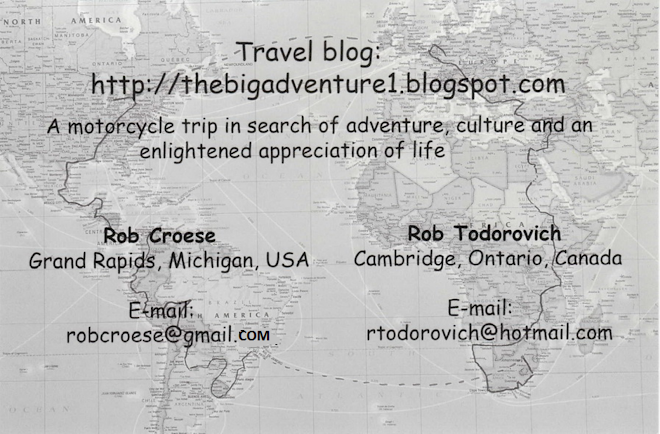Now that the journey is over it's amazing how quickly it has become a distant memory. RobC and I have had many conversations with fellow travelers about the type of traveling all of us have done and how few people actually do it. Most people are afraid of the unknown, they don’t like to venture out of their comfort zones. They hear stories about getting robbed, mugged or even killed, about how hard it is to do, catching one of the many strange and exotic diseases, how unsafe places are and the list goes on. Of course there is a certain amount of risk involved in traveling by bike or car through many countries but it is minimal as long as you don’t hang your common sense on a hook at home. Most of the time you deal with friendly people and frustrating bureaucracy. You also have the day to day activities of finding food, lodging and fuel but this forces you to meet the local people, get a feel of their day to day living. None of these are life threatening.
This journey has been one of the best things I have ever done. I’m sure RobC would agree. It has taught me that traveling by motorcycle through 25 different countries, crossing many borders, dealing with the different languages and currencies, questionable roads, stunning scenery, interesting cultures and foods, variety of climates and amazing people does give you a new level of appreciation for the people and places that make up this world. You learn about the ancient world of the Maya in Uxmal, Mexico and Tikal, Guatemala, see what people deal with in the aftermath of Hurricane Richard in Belize, muddle your way through the annoying and convoluted border crossing bureaucracy in Central America, experience the incredible hospitality of the Columbian people, learn the horrible past of the Shining Path movement in and around Ayacucho, Peru during the 1980s, ride the notorious Death Road in Bolivia, taste a world famous bife de chorizo in Argentina, see the Big 5 in their natural habitat in Kruger Park, South Africa, climb the world’s tallest sand dune in Namibia, know what a Pula can buy in Botswana, experience the unbelievable generosity of impoverished Zimbabwean people, talk to an extremely grateful school head master in Senga Bay, Malawi, feel the overwhelming aura of the old slave market in Zanzibar, gaze at vast beauty of the Serengeti and find out the interesting history and lifestyle of the Masaai. This is just a taste of what we experienced along the way.
A trip like this breaks down all your preconceived images and stereotypes. Fear of the unknown and ignorance is replaced with fond memories of distant lands and interesting people coming together to create incredible experiences. Incredible, meaning both the positive and the negative but the two together make up the adventure, the experience. It’s not an adventure if everything goes as planned. Matter of fact, it’s quite boring.
So .... toss aside the garbage you hear from the media, do your own research and GO! People complain about not having the time or the money or their job won’t allow it or they have kids ... the justifications pile up quickly. If you REALLY want to do it, you can, but it takes some determination and sacrifice. We have met people that are retired and are in their 80s driving a camper, some that have sold everything and are backpacking, others that have quit their jobs, some just out of school or in between programs, people that have saved up and still manage a life back home and even people that have brought their kids along, but they are all doing it. The only downside I have seen is that you can’t remember everything you see and learn along the way.
I have always told myself that if I can help it, I will not end up at the end of my life with regrets, wishing I had done things that I always wanted to do or try. No way. We all make excuses why we can’t do what we want. Everything from money, school, kids, time, work ... all of it. I’m guilty of that myself. We can all relate to how quickly time manages to pass us by. When you think of it, we don’t have much time in the grand scheme of things so the onus is on us to make things happen. Actively engage life, chase after it and what it has to offer. After all, tomorrow may never come and then it’s too late. No “do overs”. No second chances.
You know what the real kicker is? .... It’s not that hard to do. So why don’t more people do it?































































